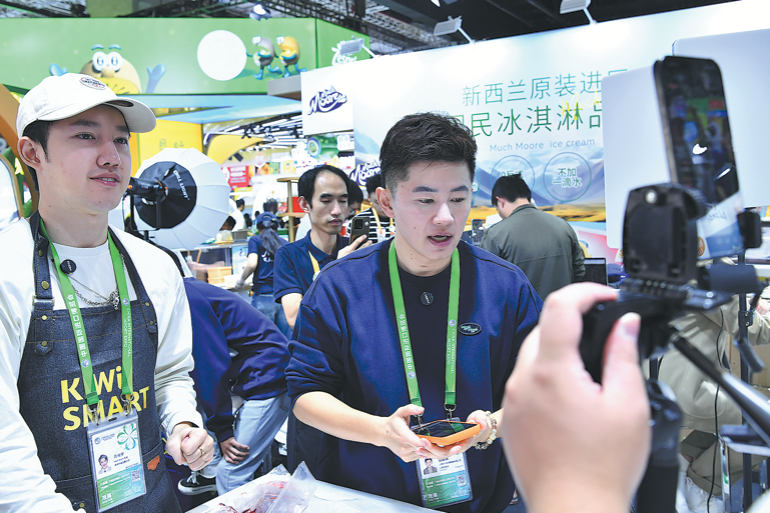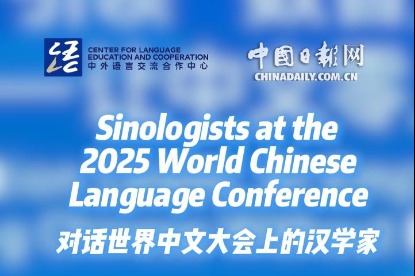Listening to ancestors in the age of AI


The world's first AI agent dedicated to researching oracle bone script has been launched in Anyang, Henan province — the "hometown of oracle bone script" — on the 126th anniversary of the script's discovery.
The discovery of animal shells and bones carved with inscriptions in Anyang, the last capital of the Shang Dynasty (c. 16th century-11th century BC), in 1899, stunned the world. The script on them reveals the oldest known mature writing system of Chinese characters. It is also key to understanding ancient history, law and culture.
The AI agent which will research the script was jointly developed by the Key Laboratory of Oracle Bone Inscriptions Information Processing of the Ministry of Education, at Anyang Normal University, the Institute of Artificial Intelligence of Xiamen University, and the digital culture lab of Tencent's sustainable social value organization.
Named "Yinqi Xingzhi", it was integrated from two main AI models, Deep-Seek and Tencent Hunyuan, according to its developers.
Researchers have also built the world's largest multimodal dataset on the subject, containing 1.43 million character forms, data from 15,000 oracle bone fragments and 3,000 research articles, says Liu Yongge, head of the laboratory at Anyang Normal University.
The laboratory has developed a spiraling upward development path of "digitization-datafication-intelligence "centered around the Yinqi Wenyuan Oracle Bone Inscription Big Data Platform launched in 2019 and now the Yinqi Xingzhi AI agent.
This approach has significantly advanced the field, particularly in tasks such as reducing duplication of oracle bone data, according to Liu.
These innovations are enhancing the efficiency and accuracy of research into oracle bone scripts, contributing to a deeper understanding of the ancient Chinese history.
The new AI agent is a key part of the broader Digital Oracle Collaborative Project which focuses on building datasets and digitally recovering oracle bones lost or held overseas.
Song Zhenhao, a scholar at the Chinese Academy of Social Sciences and a leading oracle bone script expert, says the name "Yinqi Xingzhi" draws from historical and poetic classics, implying "unwavering steps and continuous progress".
He marks a shift in research from interpreting single characters to understanding their context.
A key mission is the digital repatriation of oracle bones held overseas. The project has a digital collection of 1,525 oracle bones, including 950 from collections outside the Chinese mainland. However, Liu acknowledges that with an estimated 30,000 fragments overseas, this is just a small step.
He describes the AI agent as an assistant that handles repetitive tasks, freeing experts to focus on academic insights. "The human brain forgets, but machines do not; the human brain excels at innovation, machines excel at execution," Liu adds.
The Digital Oracle Collaborative Project uses glyph-matching algorithms to treat the 3,000-year-old characters as images. The system can identify and track characters across archaeological rubbings and academic documents, addressing a major research challenge: the lack of a standardized character library.
"We've solved the fundamental problem of how to find and study these characters efficiently," says Wang Chaoyang, chief architect at the Digital Culture Lab of Tencent Sustainable Social Value.
The team also uses micro-trace enhancement technology to improve the clarity of inscribed characters on digitized oracle bones, producing high-quality models for research and education.
The lab is working with museums and collections to turn its digitization process into an industry standard, which would support consistent and professional digital preservation of oracle bones held overseas.
"We need to understand the user's cultural experience and identify their needs, while also figuring out how technology can make cultural engagement more intuitive and meaningful. These inscriptions are not just artifacts — they are the core of early Chinese civilization," says Wang.
Song adds that China's oracle bone script research is increasingly marked by interdisciplinary collaboration, combining humanities and sciences, and bringing together scholars in ancient writing and computer science, paving the way for unprecedented discoveries in understanding ancient Chinese civilization.
Wang Kaihao contributed to this story.
Contact the writers at qixin@chinadaily.com.cn
























